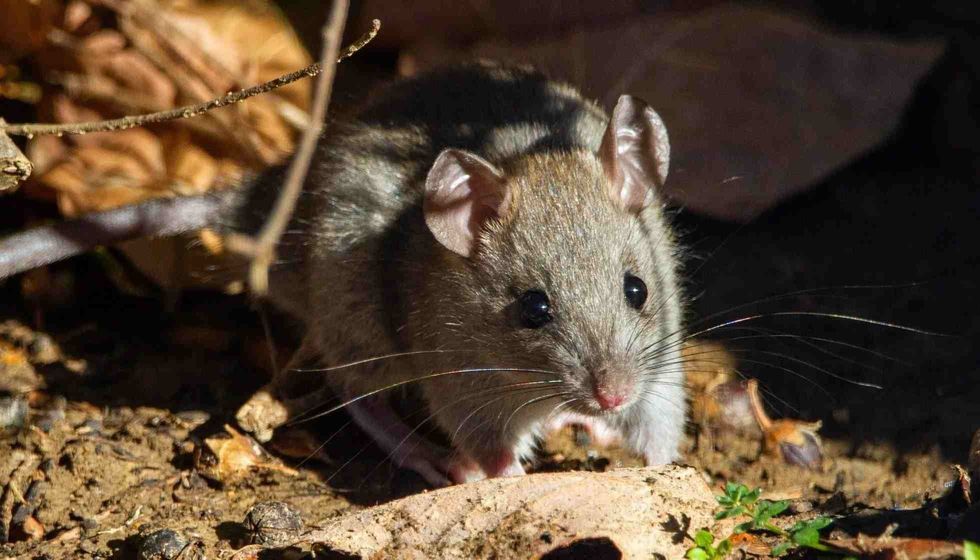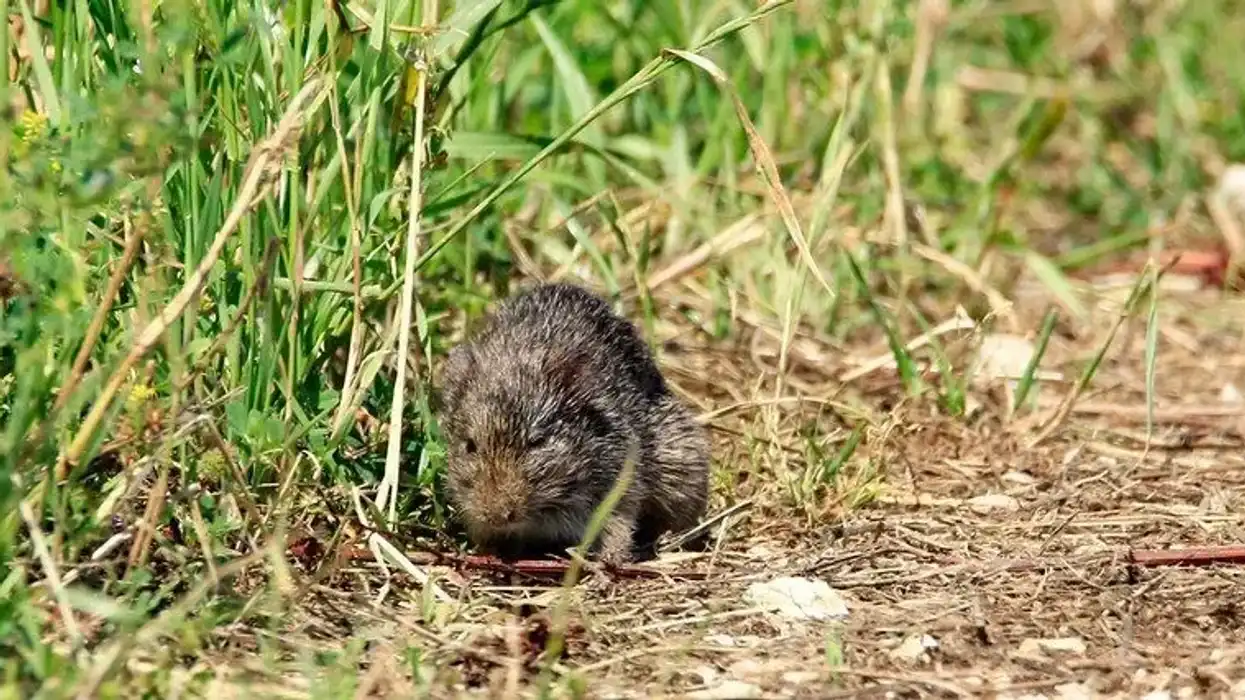Roof rats have many names and are also known as black rats, house rats, or ship rats. They have a longer tail and are found the world over.
They may have originated on the Indian subcontinent. They can feed on and destroy various agricultural crops, hence, they are considered serious pests.
They are found in various colors other than black, like different shades of brown, with a lighter shade on the underside. Their coat is scraggly, and they are smaller and less aggressive than the brown rat. Prehistoric remains of the black rats were found in Europe and Great Britain.
The ears of these rodents are big in size but smaller than those of brown rats. Roof rats have dark eyes and long whiskers.
The roof rat can fit itself into narrow, small spaces. Some scientists believe that if these rodents can fit their heads in a space, they can pass through it or fit their whole body inside.
Here are some fascinating facts about these common pests found in the upper parts of buildings. After reading about this rodent species, do check our other articles on weasel facts and red squirrel facts as well.
Roof Rat Interesting Facts
What type of animal is a roof rat?
The roof rat is a type of common rat that is found across the world. They are one of the most destructive rodents in the world that can be found in attics, false ceilings, walls, tall buildings, and cupboards in urban areas. In terms of appearances, common black rats, roof rats, and Norway rats are quite different.
What class of animal does a roof rat belong to?
The roof rat is a type of mammal or a rodent that gives birth to offspring like other mammals. Roof rats are found across the world. Due to the introduction and spread of their cousin, the brown rat, roof rats have been displaced from many areas.
How many roof rats are there in the world?
The exact figures of the roof rat population are difficult to find, as they are so widespread and prevalent and can be found in various habitats. Roof rats are known as one of the most prominent pests around the world.
Where does a roof rat live?
Roof rats have traveled with humans far and wide and on all continents. The roof rat is known and believed to have originated on the Indian sub-continent and may have traveled passively with the humans.
The roof rat's habitat is common in the coastal region, as it has adapted well to share the living space with humans and on large ships. Roof rats prefer tropical regions and have also adapted to extreme cold and harsh climates.
What is a roof rat's habitat?
Roof rats can be found most often in the coastal regions. They usually prefer the higher parts of buildings or trees in forested areas. Roof rats may be found near water bodies, but they are not very good swimmers. They are not found in temperate zones because of the Norway rats who have actually driven them out.
Who do roof rats live with?
Roof rats are known to live in colonies and build their nests in the upper parts of the building in a colony too. Roof rats live in polygynous groups with multiple males and females.
In order to identify signs of infestation of roof rats or the presence of a roof rat nest, look for droppings and gnaw marks along the area.
How long does a roof rat live?
The average lifespan of a roof rat is 12 months in the wild. In captivity, they are known to live for up to four years.
How do they reproduce?
Roof rats are social animals and form groups with multiple males and females. There is a linear hierarchy with one dominant male and two or three dominant females to other members. Females are more aggressive than males.
The dominant male would be a successful breeder. Roof rats are territorial and extremely protective of their fellow group members. Roof rats do not have a mating season per se, but they are more active during the summer months.
The females can produce five litters in a year. The female roof rat gestation period is 22-24 days, after which a litter of eight young ones is born on average in the nest.
The young ones, when born, are underdeveloped, and it will take 14-17 days for them to open their eyes. Weaning occurs after three or four weeks and they are milk-fed until then. After weaning, they will leave the nest.
What is their conservation status?
The population of roof rats is stable and increasing, although roof rats were displaced from many regions by brown rats. However, roof rats have also adapted well to their surroundings and are classified as of Least Concern by the IUCN.
Roof Rat Fun Facts
What do roof rats look like?

Roof rats are rodents that are long and thin. They have large eyes and ears and a pointed nose. They are soft and furry and are brown, gray, or black in color. The underbody is a lighter shade of grey, black or white.
How do they communicate?
Roof rats are noisy creatures. They will squeak loudly when they are threatened or while socializing. Roof rats are known to secrete oil, which they smear to mark their territories. They may give out nonvocal threats by postures and physical touch.
How big is a roof rat?
When you compare a roof rat vs a mouse, you will be able to understand that the roof rat's size is almost twice the size of a house mouse. The roof rat size varies between 5.2-7.5 in (13.2-19.05 cm), depending on their habitat.
How fast can a roof rat run?
The roof rat can run at a top speed of 8 mph (12.87 kph) over short distances. These pests use their tail to balance themselves on narrow ledges.
How much does a roof rat weigh?
The roof rat's weight range is 2.6-8.1 oz (0.07-0.22 kg). When you compare the Norway rat to the roof rat in terms of weight, it will be evident that the Norway rat is more than twice the weight of a roof rat.
What are the male and female names of the species?
A male roof rat is called a buck and a female roof rat is called a doe.
What would you call a baby roof rat?
A baby roof rat is known as a pinky, kit, or pup.
What do they eat?
The roof rat is omnivorous as these rodents will eat anything that is present in front of them. They eat nuts, seeds, berries, food made from meat and wheat, fresh fruits, plant materials, tree bark, vegetables, snails, and slugs.
Sighting of roof rat droppings and gnaw marks are the most prominent indicator of rodent infestation, necessitating pest control services immediately.
Are they dangerous?
Yes, roof rats are extremely dangerous. They chew on electrical wires, and damage furniture and storage boxes. Roof rat droppings were the carriers of bubonic plague, that led to the death of thousands of individuals.
They carry fleas and spread diseases such as trichinosis, jaundice, typhus, rat-bite fever, and salmonellosis. They can also cause food poisoning by contaminating the food. In order to get rid of roof rats, pest control measures are extremely important.
Would they make a good pet?
Roof rats may make a better pet than brown rats as they are less aggressive and bond better with their owners. However, they are a territorial and invasive species that can destroy things easily.
Some people do not like roof rats and seek professional pest control to manage their infestation.
Did you know...
These rodents spend their daytime sleeping in the roof rat nests. They are nimble climbers and live in upper parts of the structure like attics and false ceilings in tall buildings.
Roof rats are nocturnal rodents. If you spot them, it indicates that their nest is full of other rats. A roof rat infestation can only be managed with effective pest control.
Norway rat vs Roof rat
The brown rat is larger than the roof rat. The roof rat is half its weight and size, with a long tail and ears. The brown rats are excellent swimmers and the black rat will avoid water. Roof rats are arboreal, whereas the brown rat will dig a network of tunnels.
What adaptations do roof rats have?
Roof rats are highly adapted creatures who have learned to co-exist with humans in urban or rural areas. They can stay in forests, open fields, or rural homes and urban settings easily as long as they have ready source food and water near them. They settle well at higher spots like roofs and ceilings and can eat through anything.
Here at Kidadl, we have carefully created lots of interesting family-friendly animal facts for everyone to discover! Learn more about some other mammals including stoat facts, or black rat facts.
You can even occupy yourself at home by coloring in one of our free printable Roof rat coloring pages.










